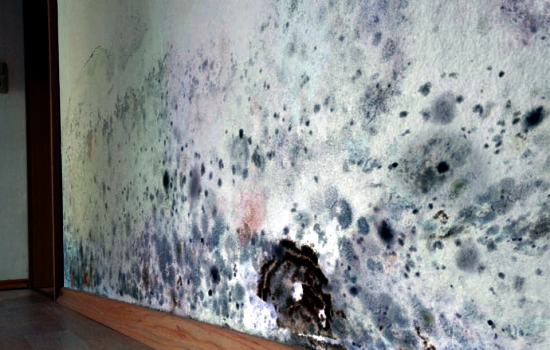Accessing Regional Post Remediation Mold Testing Near Me
Accessing Regional Post Remediation Mold Testing Near Me
Blog Article
Your Ultimate Guide to Article Mold And Mildew Removal Methods
Navigating the realm of post-mold removal techniques is a meticulous procedure that requires focus to information and a comprehensive understanding of the intricacies entailed. In the consequences of mold invasion, recognizing exactly how to effectively eradicate the mold and stop its reoccurrence is extremely important for keeping a healthy indoor setting. From picking the ideal cleansing and sanitizing approaches to implementing techniques for lasting mold and mildew avoidance, each action in the remediation trip plays a vital function in ensuring an effective outcome. As we begin on this expedition of post-mold removal techniques, we will reveal the essential techniques and ideal techniques that can assist you restore your room to its pre-mold condition and secure it against future mold threats.
Comprehending Post-Mold Remediation Refine
After completing the mold removal process, it is critical to understand the post-mold remediation methods that are necessary to make sure a efficient and complete clean-up. As soon as the mold and mildew has actually been eliminated, the next step involves cleaning and decontaminating the impacted areas to stop any type of regrowth of mold and mildew. This includes making use of specialized cleaning up agents to clean down surface areas and eliminate any kind of staying mold spores. It is crucial to dry the location entirely to inhibit the development of mold and mildew in the future (testing air quality after mold remediation). Appropriate air flow and dehumidification can help in this procedure.
Additionally, carrying out a last evaluation post-remediation is essential to make sure that all mold has actually been efficiently eradicated. If the examination discloses any lingering mold, extra removal may be essential.
Effective Cleaning Up and Sanitizing Approaches

Stopping Future Mold And Mildew Development

Relevance of Appropriate Air Flow
Correct ventilation plays an essential role in stopping moisture build-up, an essential element in mold and mildew growth within indoor environments. Efficient ventilation systems aid get rid of excess moisture from the air, lowering the chances of mold and mildew spores discovering the moisture they need to spread and germinate. Without appropriate air flow, interior areas can become a reproduction ground for mold and mildew, causing potential health dangers and architectural damages.
By making certain correct air look at this site blood circulation, ventilation systems can also help in drying out wet areas faster after water damages or flooding occurrences, additionally preventing mold and mildew growth. Post Mold remediation cleaning. Precede like restrooms, attics, basements, and cooking areas where wetness levels have a tendency to be greater, setting up and maintaining effective ventilation systems is vital in protecting against mold and mildew invasions

Tracking and Maintenance Tips
Provided the important role that proper air flow plays in stopping mold and mildew development, it is important to develop efficient tracking and upkeep suggestions to ensure the ongoing performance of ventilation systems. Regular examinations of air flow systems should be performed to inspect for any indicators of obstructions, leaks, or breakdowns that might hinder proper air movement. Surveillance moisture degrees within the property is additionally vital, as high moisture can add to mold development. Mounting a hygrometer can assist track humidity degrees and alert homeowners to look at this site any spikes that might need focus. Furthermore, making certain that air filters are consistently cleansed or replaced is vital for keeping the efficiency of the ventilation system. Applying a schedule for routine upkeep jobs, such as air duct cleansing and heating and cooling system inspections, can help prevent issues before they escalate. By remaining conscientious and aggressive to the problem of air flow systems, homeowner can efficiently alleviate the threat of mold and mildew regrowth and preserve a healthy and balanced interior environment.
Final Thought
In verdict, post-mold remediation methods are essential for ensuring a safe and clean atmosphere. Understanding the process, executing efficient cleaning and disinfecting methods, avoiding future mold and mildew development, maintaining appropriate air flow, and normal surveillance are all crucial steps in the removal procedure. By adhering to these standards, you can successfully remove mold and stop its return, promoting a healthy living or working space for all passengers.
In the after-effects of mold infestation, understanding just how to properly eliminate the mold and mildew and avoid its reoccurrence is critical for keeping a healthy and balanced indoor environment. As soon as the mold and mildew has actually been eliminated, the following step involves cleaning and disinfecting the affected locations to prevent any regrowth of mold and mildew - Post Mold remediation cleaning. After getting rid of noticeable mold growth, it is vital to clean up all surface areas in the affected area to eliminate any kind of continuing to be mold spores. To better enhance mold prevention actions, it is crucial to address underlying issues that originally led to mold advancement.Given the critical duty that appropriate air flow plays in stopping mold growth, it is critical to establish reliable surveillance and upkeep tips to ensure the continued functionality of ventilation systems
Report this page